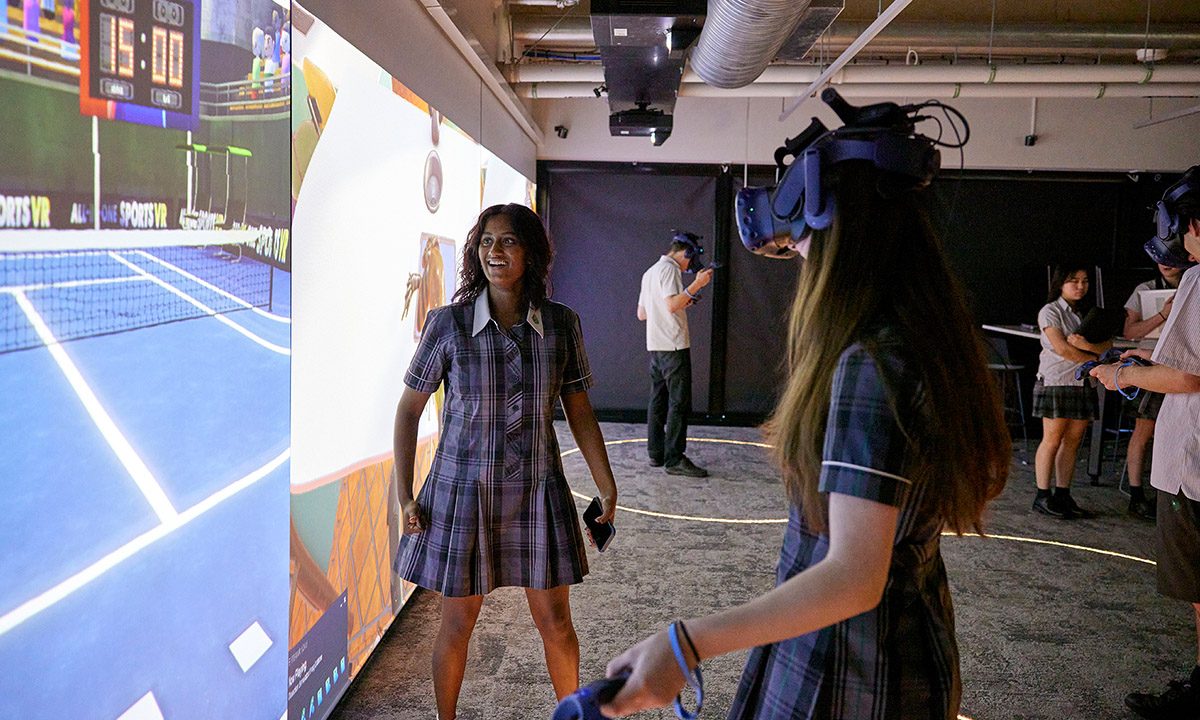Author: Shai Coggins, Learning and Teaching Innovation Manager
Date: 10th Apr 2024
Harnessing Immersive Learning for Impactful Learning Experiences
The education landscape is being revolutionised by advancements in technology, particularly in the realm of immersive learning experiences. Immersive learning is an educational approach that uses spatial computing or extended reality (XR) technologies like virtual reality (VR), mixed reality (MR), and augmented reality (AR). From exploring the depths of space to embarking on virtual excursions to all corners of the globe, the possibilities are endless. Researchers from around the world are highlighting the unique advantages that virtual environments offer in facilitating learning experiences that were previously difficult or impossible to provide.
While XR is an incredible and useful teaching tool, it’s important to note that it isn’t designed to replace traditional teaching methods but rather to complement and enhance them. Not all subjects are suited to instruction through VR or AR, nor should they be. Students benefit from a diverse array of teaching methodologies to maximise their learning experiences. Therefore, to fully leverage XR technologies as a teaching tool in the classroom, it’s important to know when it’s best to use them.
Here are the optimal applications of XR in education:
1. When providing learning experiences that could not be done easily, safely, or inexpensively with other tools.
Many industries are now using XR technologies as an essential part of training and development. And, one of the most compelling applications of immersive learning is in the field of medical education. Traditional methods of studying human anatomy often involve static textbooks or cadaver dissections, which can be limited in their scope and accessibility. However, with virtual reality (VR) technology, students can now embark on immersive journeys through the intricate systems of the human body.
A VR experience that can be used to learn about human anatomy is The Body VR: Journey Inside a Cell. The Body VR transports students into the human body, travelling from the heart, through the bloodstream to the nucleus. The narrated experience allows students to enter into a red blood cell and teaches them how blood cells work to spread oxygen throughout the body and fight deadly viruses.
In the classroom setting, The Body VR offers an educational journey that immerses students in their learning, providing them with a deeper understanding of the subject matter and connection to the material. Pottle (2019) emphasises the benefits of using VR in medical students’ training by improving knowledge gain and retention, transfer of skills into real world practice, as well as decreasing cost of training.

2. When learning experiences may be enhanced by three dimensionalities.
In subjects like physics and geometry, grasping abstract concepts can be a daunting task for students. Kaufmann, et (2020) advocate for the use of immersive environments to enhance learning experiences through three-dimensional representations in subjects like geometry. By immersing learners in virtual worlds where they can manipulate objects and observe physical phenomena firsthand, educators can bridge the gap between theory and practice, making complex concepts more tangible and accessible.
A VR app that works well for learning geometry is Neotrie VR, a versatile software empowering users to create, manipulate, and engage with 3D geometrical objects and models. This experience not only provides students with the tools to design and create from the perspective of the third dimension and delve into 3D modelling and printing, but also allows teachers to create mathematical activities for their students, with 3D text, photos, videos and sounds.
NeoTrie VR fosters a creative environment for students to explore mathematical concepts in engaging and interactive ways. By integrating collaborative and competitive game-based learning methods, students are motivated to actively participate and immerse themselves in the learning process, enhancing their understanding and retention of mathematical principles.
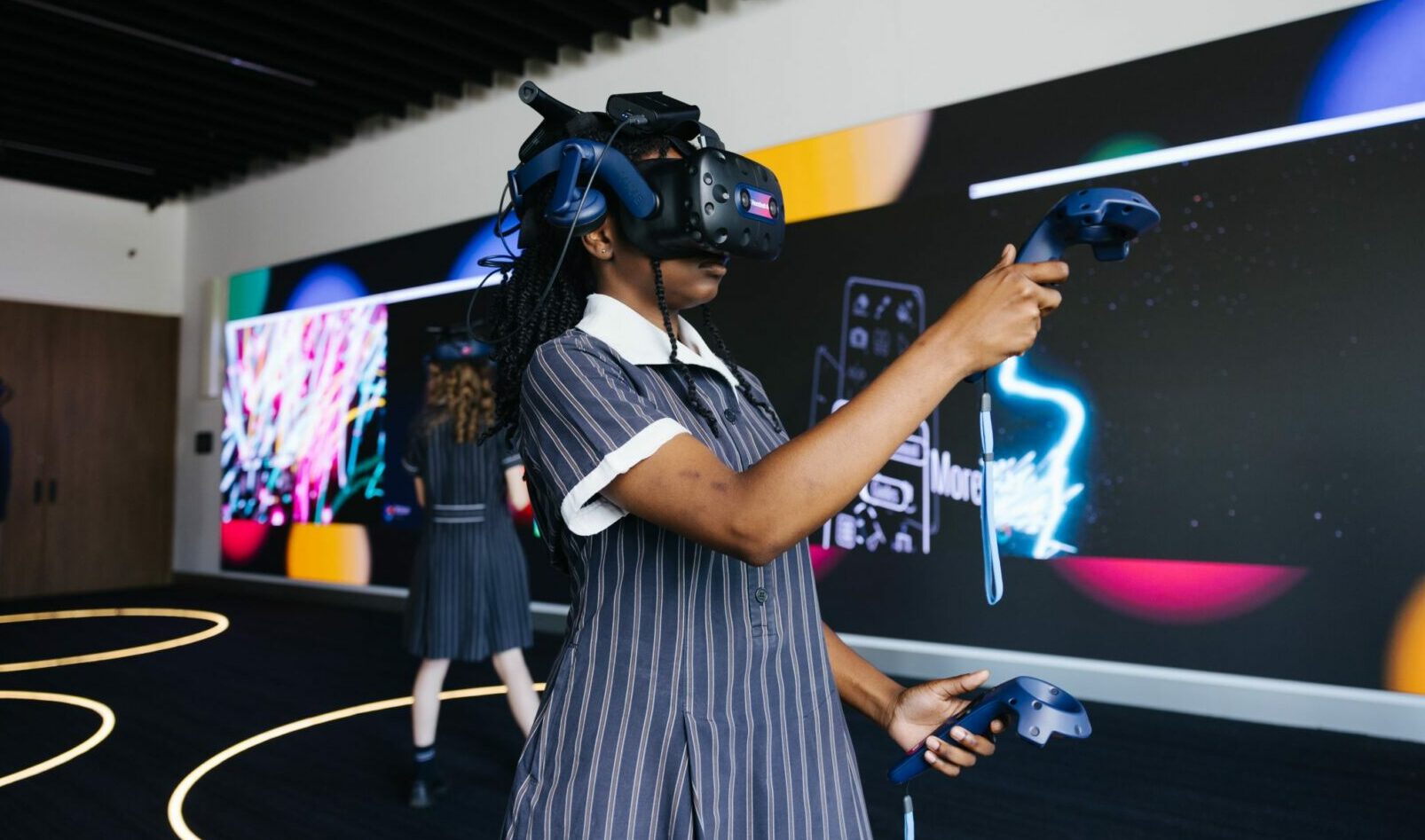
3. When learners can benefit from empathetic experiences or viewing the world through another’s perspective
Empathy is a fundamental aspect of human connection, yet it can be challenging to cultivate through traditional educational methods. Virtual environments offer a unique opportunity to walk in someone else’s shoes, providing immersive experiences that allow learners to empathise with diverse perspectives and life circumstances. A study conducted by Abadia, Calvert, & Dasika (2019) showed the potential of using VR to develop students’ empathy. Whether it’s experiencing the realities of homelessness or the struggles of refugees, immersive learning fosters empathy and promotes a deeper understanding of social issues.
A VR app that works well for exploring empathy is The Book of Distance, crafted by artist Randall Okita. This immersive experience follows the journey of Okita’s grandfather, Yonezo Okita, from Hiroshima, Japan to Canada during wartime. Through a blend of mechanical sculpture, hand-crafted sets, film, and stage techniques, The Book of Distance offers a powerful lens through which to explore themes of identity, displacement, and resilience.
The Book of Distance serves as a compelling tool for fostering empathy and understanding among students, providing a unique opportunity to engage with history on a deeply personal level and initiate conversations within the classroom.
Discover how immersive experiences like The Book of Distance and other immersive experiences can enhance empathy in the classroom, by viewing the results in ‘The Empathy in VR’, a pilot project co-designed between Lumination and Goolwa Secondary College (GSC).
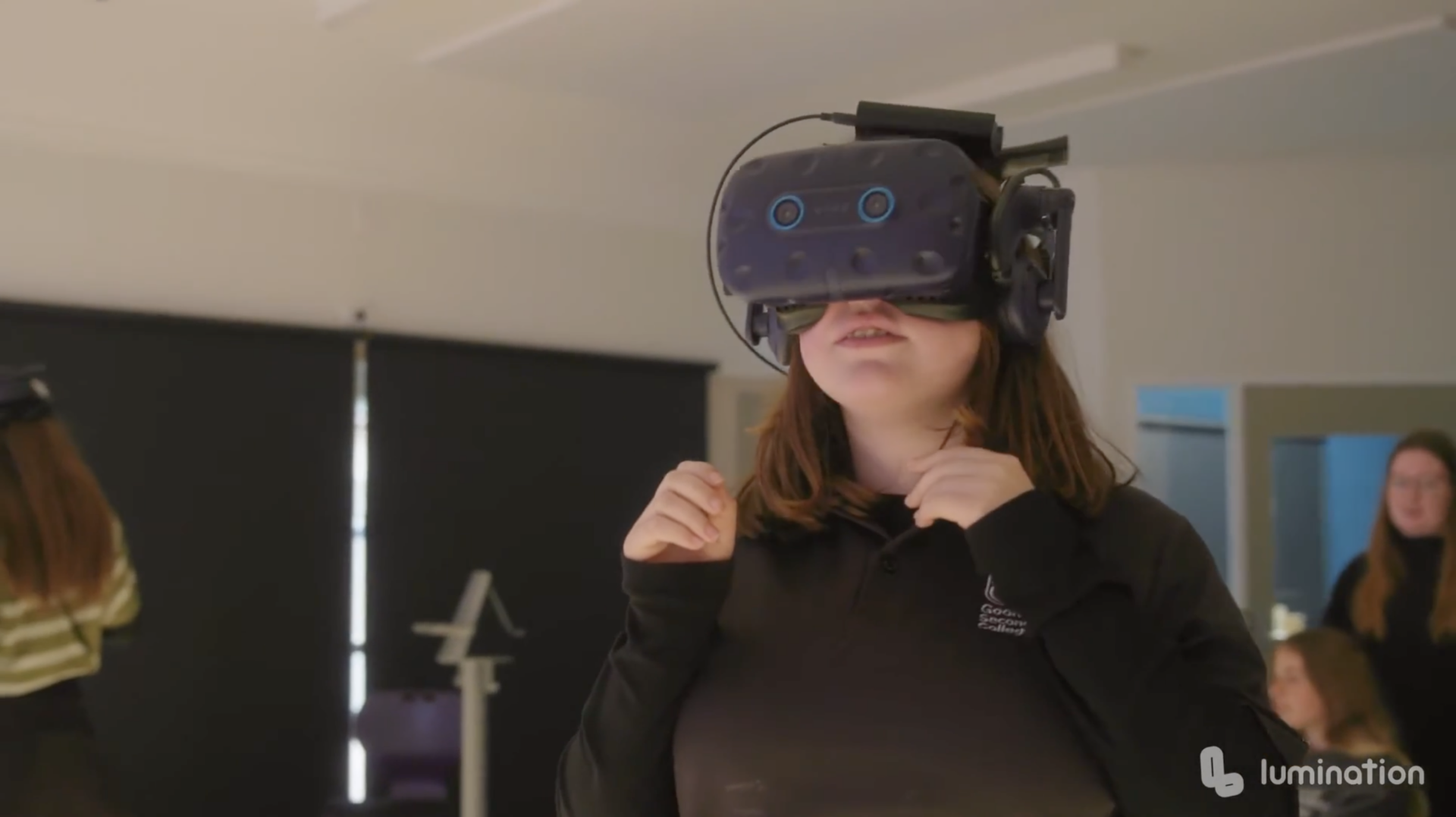
4.When it’s useful in transporting students to new places.
There are a multitude of reasons educators organise excursions for students. However, such excursions are usually few and far between due to logistics and prohibitive costs. Virtual excursions offer students the chance to transcend physical boundaries and embark on adventures to destinations that would usually be out of reach (Mohring & Brende, 2021). Whether it’s venturing into outer space, exploring historical landmarks, or visiting bustling cities, virtual excursions enrich learning experiences by providing first hand exposure to diverse cultures, environments, and historical events.
A popular VR app for virtual excursions is Google Earth VR, which takes students on a journey around the world, exploring the globe from a new perspective. This immersive experience lets students see the world’s cities, landmarks, and natural wonders, while learning about different cultures and communities. You can fly over a city, stand at the top of the highest peaks, and even soar into space. Earth VR comes with cinematic tours and hand-picked destinations that send you to the Amazon River, the Manhattan skyline, the Grand Canyon, the Swiss Alps, and more.
Google Earth VR offers an invaluable opportunity for students to learn about the diverse cultures, communities, and experiences of others, fostering a deeper understanding and appreciation of diversity. This experience elevates the standard Geography, Maths, and Earth and Space Sciences experience, with a field trip around the world.
Find out more about how Grange Primary saw an increase in engagement by introducing Google Earth VR into Geography class, creating a more interactive and exciting learning experience.
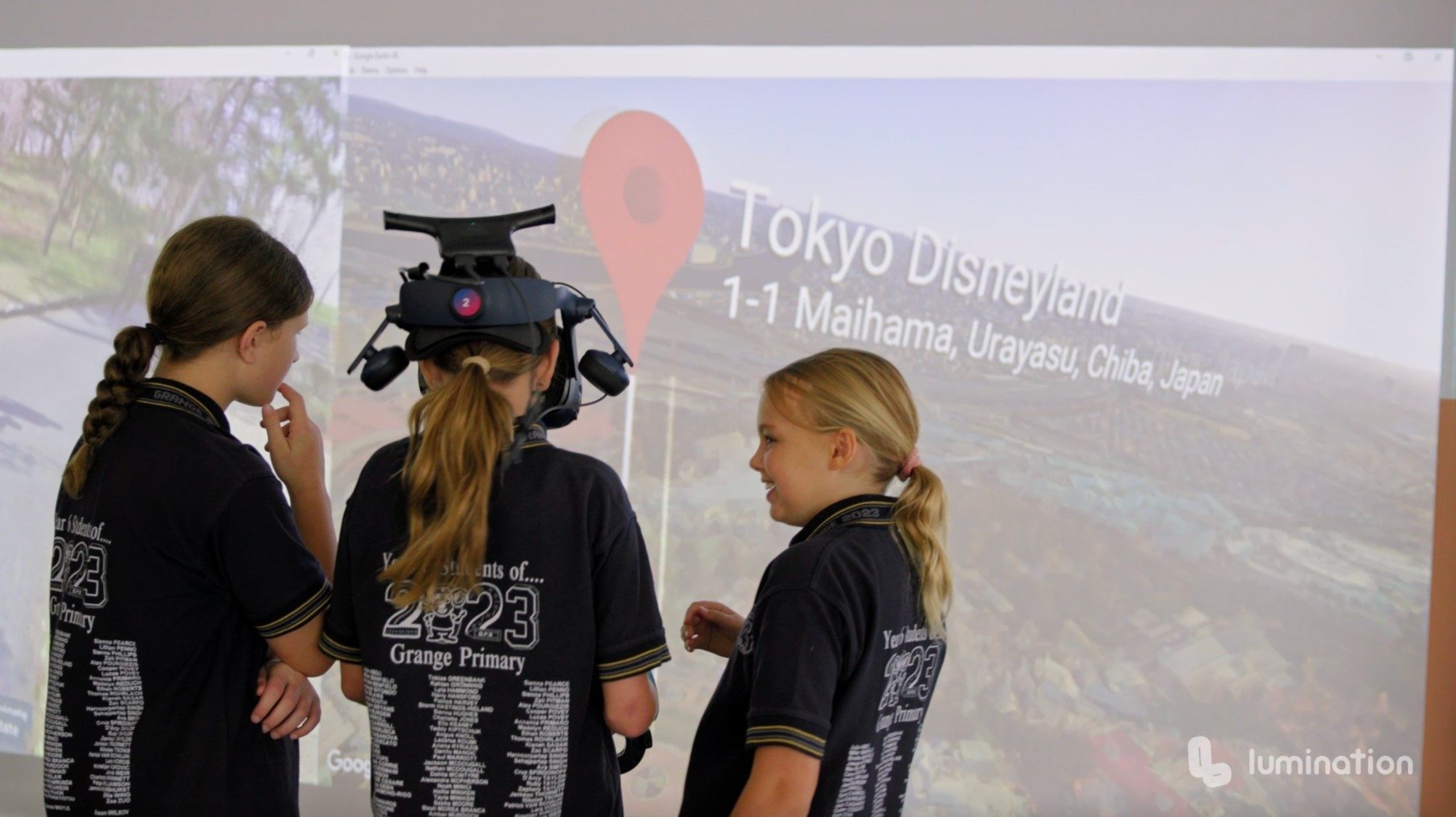
5. For enabling learners to practise physical tasks in a simulated environment.
In fields where hands-on practice is crucial, such as surgery or sports training, immersive simulations offer a safe and effective way for learners to hone their skills. Some studies highlight how VR environments enable students to practise complex tasks in realistic settings, without the risk associated with real-world scenarios. Li & Li (2020) support the use of VR to promote the improvement of sports practices. Whether it’s performing surgery or mastering football plays, immersive learning empowers learners to gain practical experience and build confidence in their abilities.
A helpful VR app for practising sports activities is All-in-One Sports VR, a virtual Olympics which gives students the chance to perfect their skills in a range of sports, including baseball, archery, ping pong, boxing and tennis. All-in-One Sports VR is a safe and inclusive way to foster collaboration, sportsmanship, and skill development in the classroom.
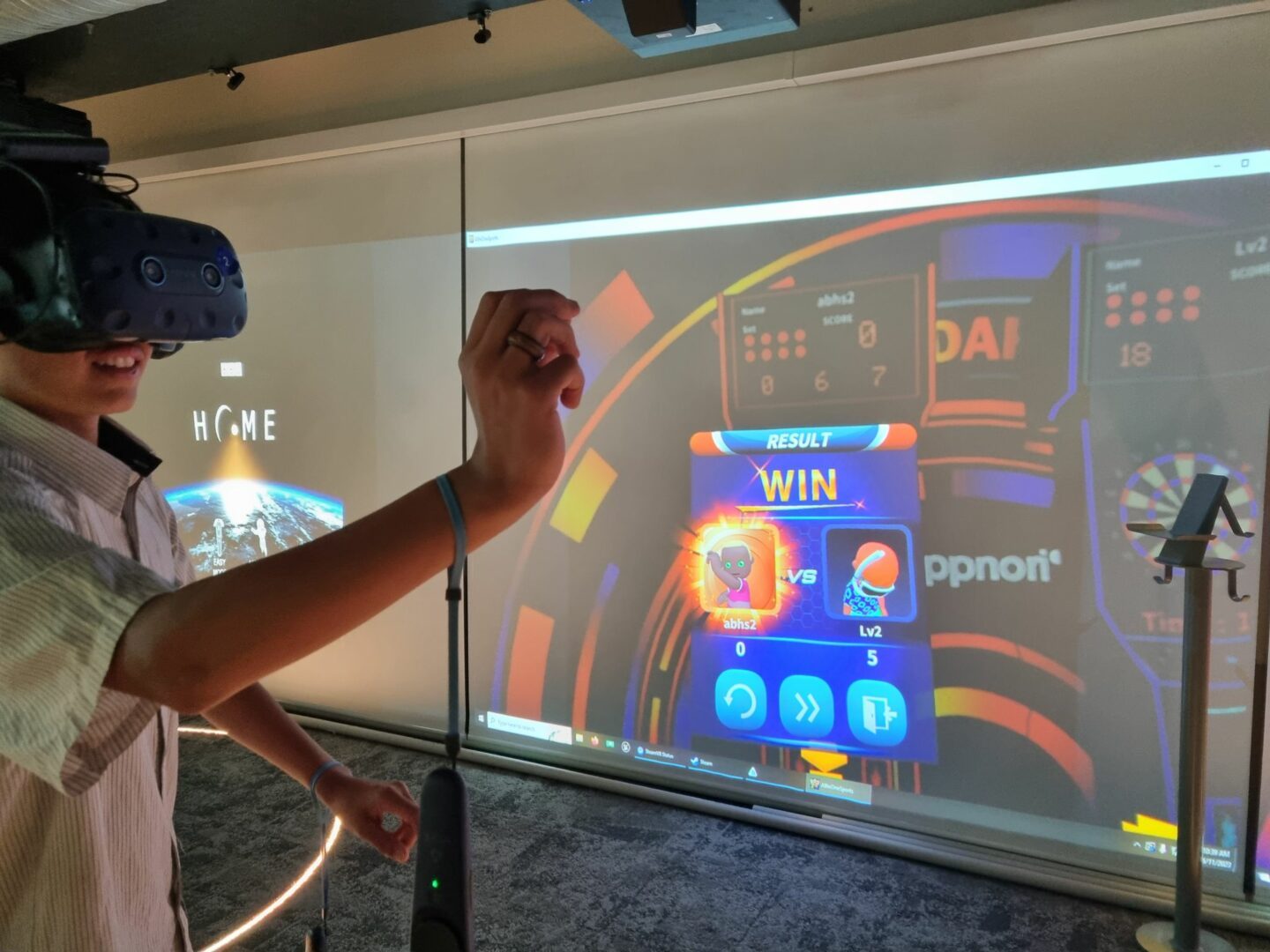
Find out more
This is just a taste of how immersive technology can be used in the classroom to increase engagement, improve knowledge and retention, and introduce collaborative learning experiences for students. Reach out today to discover how your school can leverage the full benefit of immersive learning.

